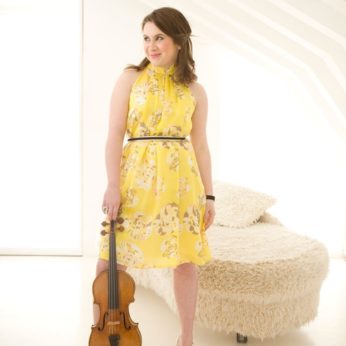Composer: Johannes Brahms (b. 1833 - d. 1897)
Performance date: 01/07/2015
Venue: St. Brendan’s Church
Composition Year: 1858
Duration: 00:43:17
Recording Engineer: Richard McCullough, RTÉ lyric fm
Instrumentation Category:Small Mixed Ensemble
Instrumentation Other: vn,va,vc,db,fl,2cl,hn,bsn
Artists:
David Cohen -
[cello]
Peter Whelan -
[bassoon]
Hervé Joulain -
[horn]
Mathias Kjøller -
[clarinet]
Romain Guyot -
[clarinet]
Phillipe Bernold -
[flute]
Niek de Groot -
[double bass]
Maxim Rysanov -
[viola]
Chloë Hanslip -
[violin]

This is one of those confusing stories like
the Strauss Metamorphosen, where the
original chamber version of a work best known in the orchestral version has
been lost. We know that Brahms originally scored this work for nonet – flute,
two clarinets, bassoon, horn, violin, viola, cello and double-bass – and that
he only orchestrated it on Joachim’s insistence. Brahms took it as far as
fifteen strings with single winds for its first performance in
He then completed the final orchestration in time to premiere both Serenades
under his own baton in 1860, also in his hometown of
reconstruction of the original version made in 1983 from a close study of the
orchestral score. The result is a chamber work to put alongside Beethoven’s
Septet, Schubert’s Octet and Mozart’s great serenades.
In 1857 through the good offices of Clara
Schumann, Brahms got a position as pianist and chorus director for the
three-month season in the tiny principality of Lippe-Detmold. These provincial
courts were about to be swallowed by history, but for a while Brahms was able
to retreat from the world in sumptuous surroundings, to study the scores in the
library and to try out choral compositions with his choir. But the Court’s
chosen repertoire was mostly serenades, divertimenti and cassations, and
Brahms’ study of these scores is reflected in Op.11. The music is delightfully
tuneful and unfolds at a leisurely, unhurried pace with an expansive number of
movements, almost equalling the seven movements of Mozart’s B flat Serenade.
It has not always been popular. A
concertgoer at the orchestral premiere in Hanover wrote in fury: Brahms’ Serenade is a monstrosity, a
caricature, a freak, which should never have been published, much less
performed here; we say here, whilst the piano concerto served up to us last winter
still sticks in our throats, it is inexcusable that such filth should have been
offered to a public thirsting for good music. The electrifying D minor
Piano Concerto had indeed been hissed in the
Gewandhaus, the most prestigious
venue in
But it is fascinating that such a light-hearted, even archaic, work as the D
major Serenade should have been described as filth. After these early setbacks Brahms never expected his new
works to succeed immediately. Unlike Clara, who regularly described
unappreciative audiences as philistines, Brahms accepted the public as the
ultimate judge, even if their verdict was slow to take shape. But even then
‘disgusted from
was in a minority, and the two Serenades quickly found their way into the repertoire.
The opening horn motif, taken up by the
clarinet, flute and violin in succession, makes clear the eighteenth century
origin of the work. The extensive scale of Brahms’ thought is emphasized by the
long, sinuous line of the second subject, and his contemporary nineteenth
century hand can be discerned in the far-reaching modulations of the development. The swirling,
spectral D minor scherzo brings a ghost to the feast, but it is impossible not
to respond to the swinging dance syncopations of the trio, introduced again by
the horn before the strings take up the theme. The starring role given to the
horn in this work reminds us that it was the instrument he learnt from his
father, and the only instrument apart from the piano that he knew from the
inside. The Adagio is often seen as
Brahms’ homage to Beethoven’s Pastoral with its three nature-inspired themes,
the third one led by the horn again. We are captivated while his themes
undulate through a full sonata form, with an elaborately varied recapitulation.
After this evocatively rural dreamscape, the two minuets, without trios,
increase the tempo. The first one opens with a delicious chugging bassoon, the
second is dominated by the minor-key strings. The second scherzo glorifies the
horn in great extrovert style; its trio is even more extravagant with rushing
quavers in the strings. The finale is a bucolic rondo with a martial main theme
that diverts into several lyrical episodes, without losing the forward impetus
essential for the last movement in a work of this genial nature.
Copyright © 2025 West Cork Music. All rights reserved.
Designed and developed by Matrix Internet